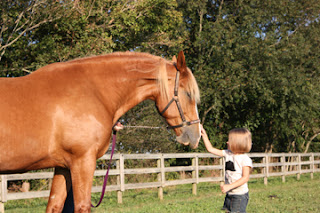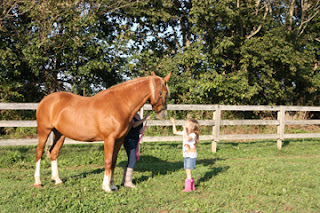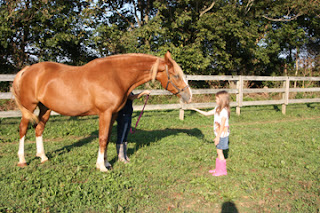Because digital art is ultimately preserved in a digital format, not on paper, most people mistakenly feel that the expense of a museum paper is not always necessary. While it is true that under good conditions, with archival grade inks and proper storage and display, acid-free cellulose papers can last more than 20 years, this is not ideal for the invested collector who is looking for museum quality archival works that last generations.
For all giclee fine art prints the new papers we are utilizing here in the studio for all prints and greeting cards starting january 1, 2013 are as follows:
Canson Infinity Arches Aquarelle Rag
The world’s No. 1 mould-made watercolor paper is now available for the digital fine art market, lending a unique and unrivalled character to the fine art reproduction of traditional artwork and photographs. Internally buffered and acid-free, it was designed to meet the longevity requirements of galleries and museums.
A genuine 100% rag watercolor paper, Arches Aquarelle Rag possesses the unique structure, surface texture, and warm white tone that demanding artists expect from a traditional fine art paper. It’s compatible with pigmented and dye inks, dries instantly, and is water-resistant. The absence of optical brightening agents ensures consistency for generations.
Canson Infinity Arches Velin Museum Rag
For centuries, Arches Velin Museum Rag has been chosen to create lithography, intaglio etchings, engravings, and collotypes by world-renowned artists. Today, Arches Velin Museum Rag is available for the inkjet fine art and photograph market.
This mould-made paper has a unique, fine-grained, smooth surface and structure, and a pure white tone that is ideal for sophisticated photographs, museum-grade applications, and fine art printmaking.
Arches Velin Museum Rag is compatible with pigmented and dye inks, dries instantly, is water-resistant, and contains no optical brightening agents. Internally buffered and acid-free, it was designed to meet the longevity requirements of galleries and museums.
Canson Infinity BFK Rives
The world’s No. 1 traditional mould-made printmaking paper
BFK Rives has a unique, fine-grained smooth surface and structure, and a pure white tone that is ideal for sophisticated photographs, museum-grade applications, and fine art printmaking.
It is compatible with pigmented and dye inks, dries instantly, is water-resistant, and contains no optical brightening agents. Internally buffered and acid-free, BFK Rives was designed to meet the longevity requirements of galleries and museums.
Canson Infinity Edition Etching Rag
Canson Infinity Edition Etching Rag is a 100% cotton mould-made fine art paper that is reminiscent of the original etching and printmaking papers. By using natural minerals in its manufacture, Canson has developed a smooth-textured paper with the purest white tone in the industry, high paper shade stability, and a resistance to aging.
This museum-grade paper assures deep blacks, excellent image sharpness, and optimum color gradation, and its slight grain makes it ideal for printing detailed work, color photographs, and black-and-white portraits.
Edition Etching Rag is compatible with pigmented and dye inks, dries instantly, is water-resistant, and contains no optical brightening agents. Internally buffered and acid-free, it was designed to meet the longevity requirements of galleries and museums.
Canson Infinity Museum Canvas Water-Resistant Matte
This traditional, museum-quality, 100% archival cotton canvas has a natural white tone optimized for pigmented inks. Combining modern technical excellence with the texture, feel, and body that only an all-cotton canvas can deliver, it offers the highest quality for the most discerning of reproductions.
It is free of optical brightening agents, with a premium, coated, matte-textured surface that is ideal for giclée applications. Water-resistant and UV-resistant, it can be stretched and mounted with ease.
Canson Infinity Platine Fibre Rag
Platine Fibre Rag is the combination of the latest microporous coating with the premium 100% cotton platinum paper that Canson has supplied for years to the original Platinum and Platine photographic market.
Setting the benchmark for digital darkroom papers, Platine Fibre Rag provides the aesthetic and feel of the original F-Type Baryta Fibre paper, possessing a true pure white tone without using optical brighteners that are known to affect the longevity of digitally produced images.
Platine Fibre Rag’s extremely high Dmax and exceptional gray tones make it the product of choice for black-and-white and color photographic prints. It is compatible with pigmented and dye inks, and internally buffered to resist gas fading and maximize the conservation of prints. It dries instantly and is water-resistant.
Canson Infinity Rag Photographique
Rag Photographique is a 100% cotton, museum-grade white fine art paper developed by Canson to meet the longevity requirements of the digital fine art market. The natural minerals used in its manufacture render an extra-smooth white surface with a sensual feel and one of the highest Dmax ratings available. It is ideal for fine art photography as well as fine art printmaking.
Rag Photographique is compatible with pigmented and dye inks, dries instantly, is water-resistant, and contains no optical brightening agents. Internally buffered and acid-free, it was designed to meet the longevity requirements of galleries and museums.
Moab Entrada Digital Rag Paper
These 100% cotton, smooth,
Bright White — Reproduces vivid color and maximum contrast for exceptionally detailed prints. Bright White is compatible with dye and pigmented inks.
Natural — A soft white sheet created with no optical brighteners. Natural is ideal for black and white images, and it is compatible with dye and pigmented inks.
Moab Lasal Photo Paper
Lasal is a professional grade of digital photo paper featuring brilliant whiteness, excellent image sharpness, and good color density. Lasal papers are universally compatible with the widest range ofdye-based and pigment-based inks.
These papers can be laminated with both hot and cold presses and are perfect for general photography, portraiture, presentations, posters, graphic art reproduction, as well as signage. Neutral pH andacid-free . Made in the USA.
Natural — A soft white sheet created with no optical brighteners. Natural is ideal for black and white images, and it is compatible with dye and pigmented inks.
Moab Lasal Photo Paper
Lasal is a professional grade of digital photo paper featuring brilliant whiteness, excellent image sharpness, and good color density. Lasal papers are universally compatible with the widest range of
These papers can be laminated with both hot and cold presses and are perfect for general photography, portraiture, presentations, posters, graphic art reproduction, as well as signage. Neutral pH and
Lasal Exhibition Luster 300 — This is a heavyweight, single-sided, ultra-white luster paper that is ideal for gallery and exhibition prints. A new, fourth-generation resin coating produces an extra-wide color gamut never before seen in a luster paper. Named after the Lasal mountains, whose snowy peaks tower above the Moab, Lasal Exhibition Luster keeps true to its namesake, incorporating many of the elements found in the surrounding Moab environment — pure crispy whites and deep, luscious colors. 11 mm. 300 gsm.
Lasal Photo Gloss 270 — This bright white sheet features an instant-dry smooth gloss surface that is also smudge and water resistant. 270 gsm.
Lasal Photo Matte 235 — An instant-dry paper that is double-sided with a smooth, matte surface. Water resistant. 235 gsm.
Moab Somerset Photo Enhanced Inkjet Paper
Digital prints deliver greater resolution than traditional lithographic prints, and offer a wider color range than serigraphy. Reproduce your own masterpieces...or create new ones with a collection of fine art papers.
Somerset Photo Enhanced papers are suitable for most desktop printers (inkjet or bubble), yet deliver museum-quality reproduction and archival quality.
Lasal Photo Gloss 270 — This bright white sheet features an instant-dry smooth gloss surface that is also smudge and water resistant. 270 gsm.
Lasal Photo Matte 235 — An instant-dry paper that is double-sided with a smooth, matte surface. Water resistant. 235 gsm.
Moab Somerset Photo Enhanced Inkjet Paper
Digital prints deliver greater resolution than traditional lithographic prints, and offer a wider color range than serigraphy. Reproduce your own masterpieces...or create new ones with a collection of fine art papers.
Somerset Photo Enhanced papers are suitable for most desktop printers (inkjet or bubble), yet deliver museum-quality reproduction and archival quality.
Photo Enhanced Velvet — The answer for artists who demand crisp "photo quality" reproduction without sacrificing the luxurious feel of fine art paper. This radiant white paper, combined with high-quality ink, yields exceptional depth, and rich, vivid colors that grab the eye. 225 gsm.
We are now offering our photography clients an affordable option to our giclee fine art prints with the introduction of our C-print line, printed with a Chromira Digital Printer.
Just what is a C-Print?
From Wikipedia, the free encyclopedia:
http://en.wikipedia.org/wiki/Chromogenic_color_print
Chromogenic color prints are full-color photographic prints made using chromogenic materials and processes. These prints may be produced from an original digital image.
The first commercially available chromogenic print process was Kodacolor, introduced by Kodak in January of 1942. Kodak introduced a chromogenic paper with the name Type-C in the 1950s, and then discontinued the name several years later. The terminology Type-C and C-print have remained in popular use since this time. The chemistry used to develop chromogenic prints today is known as RA-4. Kodak Endura is one of the major professional chromogenic print papers.
The class of color photographic processes known as chromogenic are characterized by a reaction between two chemicals to form (or give birth to) the color dyes that make up a photographic image. Chromogenic color images are composed of three main dye layers—cyan, magenta, and yellow—that together form a full color image. The light sensitive material in each layer is a silver halide emulsion—just like black and white papers. After exposure, the silver image is developed (or reduced) by a special color developer. In this reaction, the color developer in the areas of exposed silver are oxidized, and then react with another chemical, the dye coupler, which is present throughout the emulsion. This is the chromogenic reaction—the union of the oxidized developer and the dye coupler form a color dye. Different dye couplers are used in each layer, so this same reaction forms a different colored dye in each layer. A series of processing steps follow, which remove the remaining silver and silver compounds, leaving a color image composed of dyes in three layers.
Prints can be exposed using digital exposure systems yielding a digital C print. These are exposed using LEDs on light sensitive photographic paper and processed using traditional silver based chemistry. These digital systems expose the paper using red, green, and blue lasers or light emitting diodes, and have the capability of correcting paper sensitivity errors.
We are now offering our photography clients an affordable option to our giclee fine art prints with the introduction of our C-print line, printed with a Chromira Digital Printer.
Just what is a C-Print?
From Wikipedia, the free encyclopedia:
http://en.wikipedia.org/wiki/Chromogenic_color_print
Chromogenic color prints are full-color photographic prints made using chromogenic materials and processes. These prints may be produced from an original digital image.
The first commercially available chromogenic print process was Kodacolor, introduced by Kodak in January of 1942. Kodak introduced a chromogenic paper with the name Type-C in the 1950s, and then discontinued the name several years later. The terminology Type-C and C-print have remained in popular use since this time. The chemistry used to develop chromogenic prints today is known as RA-4. Kodak Endura is one of the major professional chromogenic print papers.
The class of color photographic processes known as chromogenic are characterized by a reaction between two chemicals to form (or give birth to) the color dyes that make up a photographic image. Chromogenic color images are composed of three main dye layers—cyan, magenta, and yellow—that together form a full color image. The light sensitive material in each layer is a silver halide emulsion—just like black and white papers. After exposure, the silver image is developed (or reduced) by a special color developer. In this reaction, the color developer in the areas of exposed silver are oxidized, and then react with another chemical, the dye coupler, which is present throughout the emulsion. This is the chromogenic reaction—the union of the oxidized developer and the dye coupler form a color dye. Different dye couplers are used in each layer, so this same reaction forms a different colored dye in each layer. A series of processing steps follow, which remove the remaining silver and silver compounds, leaving a color image composed of dyes in three layers.
Prints can be exposed using digital exposure systems yielding a digital C print. These are exposed using LEDs on light sensitive photographic paper and processed using traditional silver based chemistry. These digital systems expose the paper using red, green, and blue lasers or light emitting diodes, and have the capability of correcting paper sensitivity errors.
All C-Prints are printed on Kodak Archival Supra Endura Professional Photographic Paper which has an extraordinary color gamut and state-of-the art image stability and is available in Glossy, Matte, Lustre, and Metallic.






















































